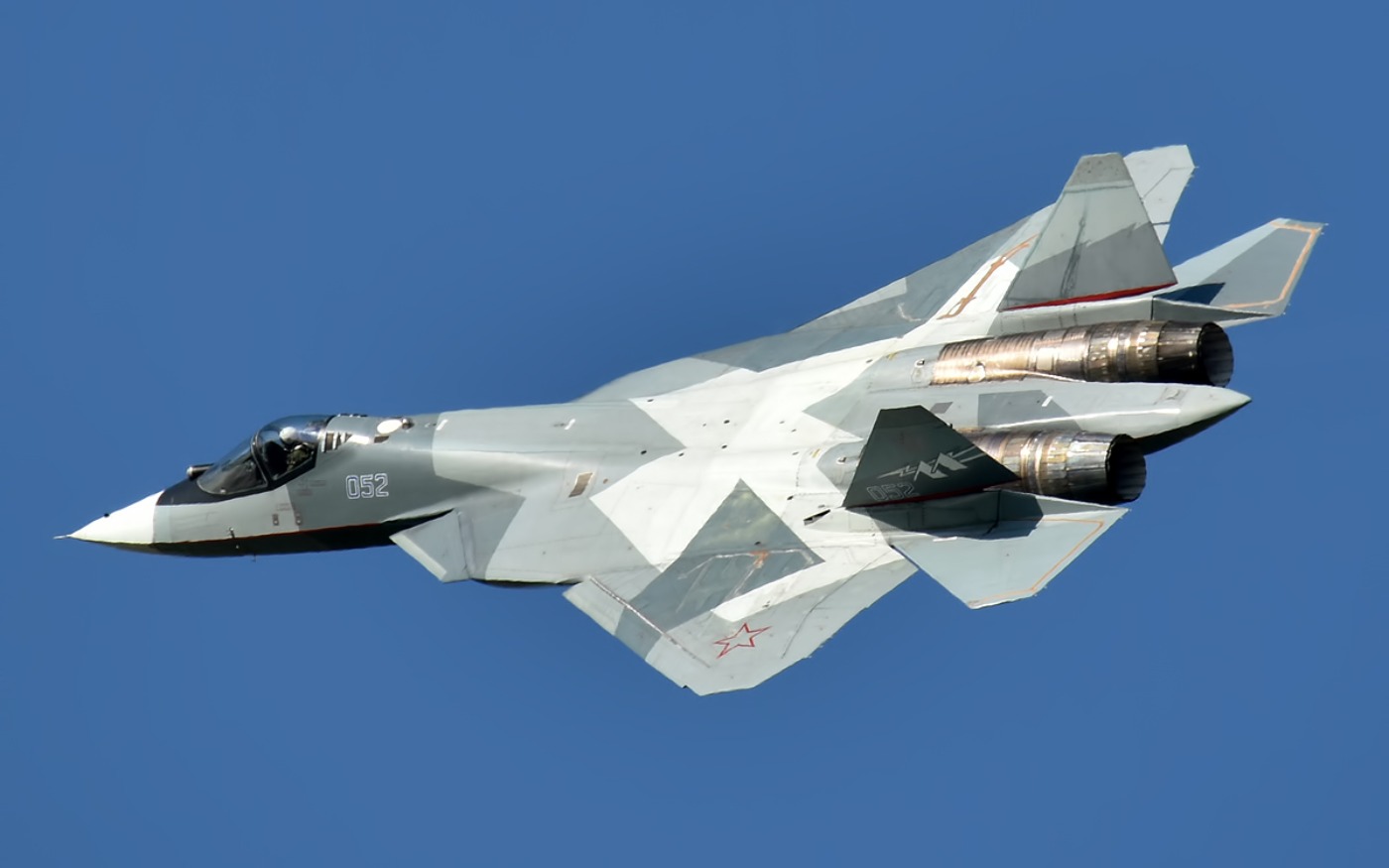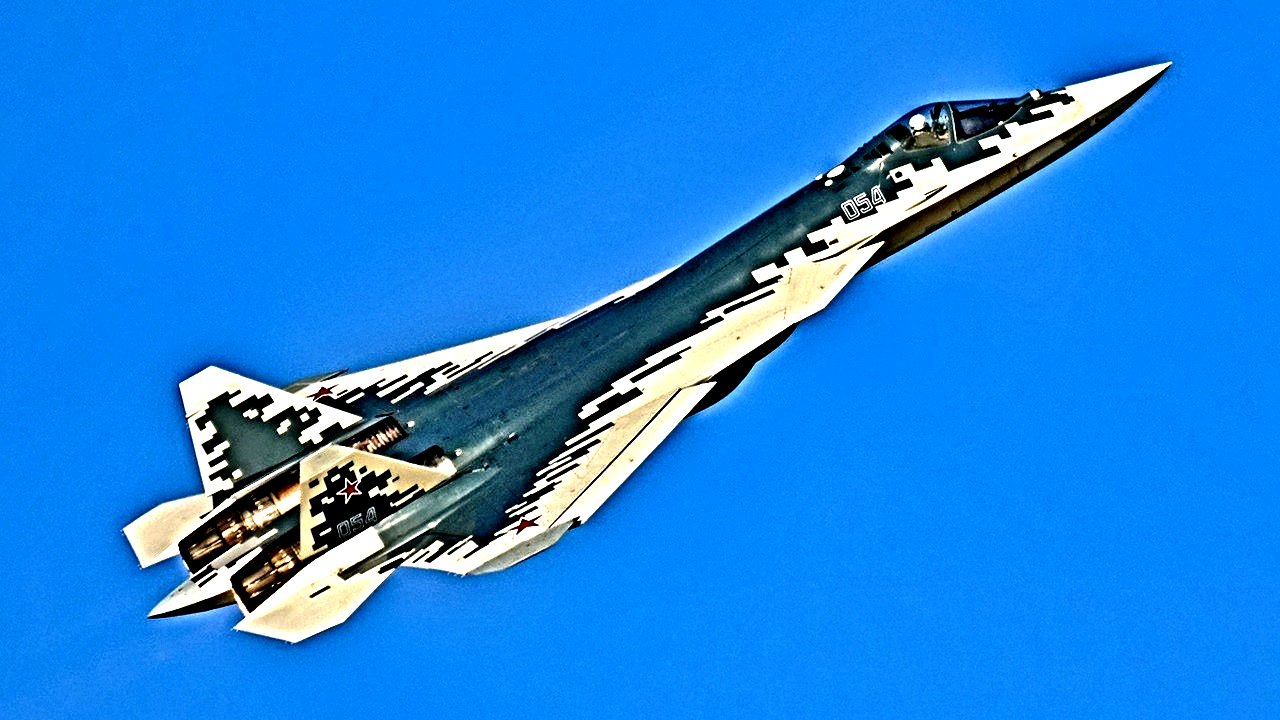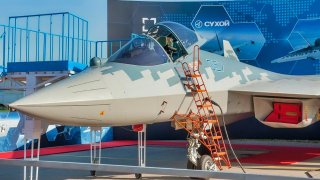Russia's Su-57 Fighter Isn't Making a Comeback Just Yet
The Russian Armed Forces have increased the deployment of their Sukhoi Su-57 (NATO reporting name: Felon) multirole fighters in the Ukraine conflict, launching over six Kh-69 cruise missiles in recent sorties. But don't be fooled: this fighter jet still has many issues to be worked out.
Summary: The Russian Armed Forces have increased the deployment of their Sukhoi Su-57 (NATO reporting name: Felon) multirole fighters in the Ukraine conflict, launching over six Kh-69 cruise missiles in recent sorties. But don't be fooled: this fighter jet still has many issues to be worked out.

Key Takeaways:
-Operating from Akhtubinsk and escorted by Su-35s, the Su-57s have remained within Russian-controlled airspace.
-Production of the Su-57 has ramped up, with plans to form a full regiment by 2024. Despite its advanced design and stealth capabilities, the Su-57 has faced skepticism regarding its true fifth-generation status and production capabilities. Western experts suggest it may lag behind rivals like the F-22 and F-35 in terms of stealth and overall performance.
The Rise of the Su-57: Russia's New Stealth Tactics in Ukraine
It was reported this week that the Russian Armed Forces have increased the use of its Sukhoi Su-57 (NATO reporting name Felon) multirole fighters in its ongoing conflict in Ukraine.
Over the past month, Russian forces have launched more than six Kh-69 subsonic cruise missiles from the Su-57 toward targets in Ukraine, the Defense Blog first reported. The jets have conducted sorties from an airbase near Akhtubinsk in the Astrakhan region and carried out missile attacks from the airspace over Kursk, Bryansk, and the occupied Luhansk region. However, while escorted by at least two Sukhoi Su-35 (NATO reporting name Flanker-E) fighters in the strike missions, the Su-57s have stayed within Russian-controlled territory.
The Kh-69 was developed to be carried within the Su-57's internal weapons bay and has a reported range of up to 290 km (180 miles).
More Su-57 Felons About to Break Out
Russia has also increased production of its Su-57 and Su-35 fighters, and the Komsomolsk-on-Amur plant claimed to have delivered a dozen Su-57 airframes, double that of the previous year. The Russian aircraft facility now aims to produce at least twenty units in 2024, enough to allow for the formation of a full regiment of the fifth-generation fighters.
As production of the Su-57 fleet steadily increases, it is believed that production of the Su-35 will wind down.
"This year, the Komsomolsk-on-Amur plant has hit a steady production pace. This delivery marks the second batch of combat aircraft for the Aerospace Forces. Our plant is meeting its commitments to deliver new aircraft and is working on creating additional batches of serial Su-35 and Su-57 jets," Yury Slyusar, CEO of the state-run United Aircraft Corporation (UAC) said in a statement, as reported by BulgarianMilitary.com.
The Su-57 has been noted for being the first Russian-built aircraft to feature stealth technology, while it further served as a test bed for the basis of a family of stealth-based aerial combat systems that could include unmanned aerial systems (UAS).
However, like other Russian military platforms now in service, the development of the Su-57 began at the end of the Soviet era. Though a number of the programs to find a replacement for the MiG-29 and Su-27 were eventually canceled due to lack of funding or withered on the proverbial vine, in 1999 the Russian Ministry of Defense again began to consider a "next-generation" fighter.
That led to the PAK FA program, which led to the Su-57.
The aircraft was developed by the Sukhoi Design Bureau within the UAC, part of the state-owned defense conglomerate Rostec. It was seen as a momentous leap forward in Russian aircraft design. As a "fifth-generation" aircraft – a marketing term introduced by Lockheed Martin to tout its F-35 Lightning II – the Russian warbird was noted for combining the functions of an attack aircraft with a fighter jet. It was touted to be able to engage and destroy various land, airborne, and maritime targets.
The Kremlin also boosted that it employed composite materials including polymer, fiberglass, and aluminum load-bearing honeycomb fillers. It also featured an aerodynamic configuration that includes a pair of internal weapons bays, which help provide a low level of radar and infrared signature.
Each of the aforementioned bays was designed to carry up to four K-77M beyond visual range radar-guided missions. In addition, the Su-57 can carry a pair of K-74M2 short-range infrared-guided missiles in underwing fairings, but at the expense of its stealth.
According to Air Force Technology, the aircraft is also equipped with 3D thrust vector jets for higher maneuverability and is capable of developing supersonic cruising speed. The twin-engine fighter is powered by Izdeliye 117 or AL-41F1 augmented turbofans, and it can fly at a speed of up to Mach two without afterburners, while it can reach a range of up to 3,500km at subsonic speeds.
The aircraft has been further noted to employ a powerful onboard computer – which has been described as an electronic second pilot – while its radar system is spread across its body. Its onboard avionics systems include active electronically scanned array (AESA) radar and ELINT systems.
Russia's Su-57 Fighter: Don't Believe the Hype
On paper at least, the Su-57 is an impressive aircraft.
Russia has further suggested that an upgraded and even more advanced model of the Su-57 could be in the works, and that it would be the world's first in-service "sixth-generation" aircraft. Yet, even as Russia continues to tout the aircraft, Western aviation experts have suggested the Su-57 is all hype – and that Moscow lacks the manufacturing capabilities even to produce the aircraft in significant numbers. That has been noted by the fact that the Su-57 first flew in January 2010 but didn't enter service until December 2020.
A full decade can truly be an eternity for any "advanced" military platforms – and that fact explains why the United States Air Force is already seeking to phase out its first fifth-generation air superiority fighter, the Lockheed Martin F-22 Raptor as it looks to develop a sixth-generation platform.
But more importantly, some Western analysts have suggested that Russia's Su-57 fighter has a design that is much closer to an advanced fourth-generation fighter than a true fifth-generation aircraft. Its stealth is nowhere near as effective as that of the F-22 Raptor or F-35 Lightning II. It may be less detectable than an F-15 Eagle or F-16 Fighting Falcon, but the Su-57 simply has a poor cross-section compared to its main fifth-generation rivals.
Moreover, the biggest knock against the Su-57 has remained the number in service. While it looks like production is finally increasing, it could still be years before the Kremlin likely has the Felon in significant numbers to match the West's F-35 and other advanced fighters.
Su-57 Photos



Author Experience and Expertise: Peter Suciu
Peter Suciu is a Michigan-based writer. He has contributed to more than four dozen magazines, newspapers, and websites with over 3,200 published pieces over a twenty-year career in journalism. He regularly writes about military hardware, firearms history, cybersecurity, politics, and international affairs. Peter is also a Contributing Writer for Forbes and Clearance Jobs. You can follow him on Twitter: @PeterSuciu. You can email the author: [email protected].


